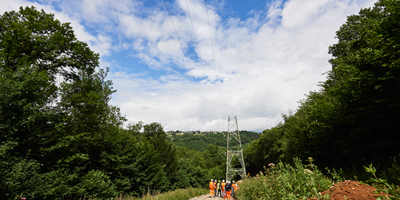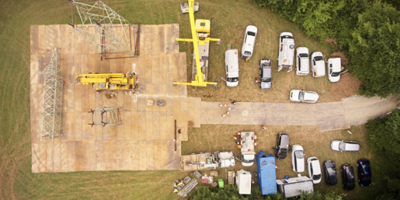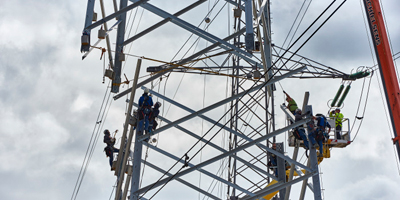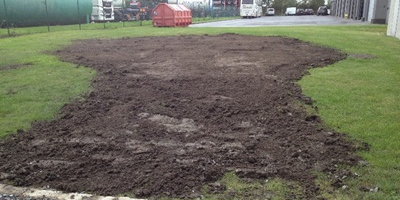Dismantling an overhead line
Throughout all its projects, Elia ensures that it takes all necessary measures to limit the work’s impact, preserve the environment and maintain residents’ quality of life.
Stages of work
Elia generally dismantles overhead lines in four distinct stages.
Stage 1: Lopping and clearance

Lopping and clearance work may be required at some points along the route. This is done in consultation with the respective land owners and operators.
Stage 2: Creating site access roads

After surveying the area with the respective land owners and/or operators, temporary access roads are built for the intermittent traffic needed to carry out the work.
Stage 3: Dismantling the old pylons

The conductors are removed section by section and immediately rewound using pulling and braking machines. The pylons are dismantled and the foundations are removed from the ground and taken away by lorry.
Stage 4: Clearing up the site

As soon as the project is finished, the temporary access roads are dismantled and the land is restored to its original state. All waste from the site is collected and taken to an accredited waste processing centre. A final survey of the area around the site is then carried out.
Organisation of the work
Respect for local residents and the environment is a priority for Elia. While every project is different and very much depends on the type of infrastructure involved, Elia always organises its work in collaboration with all relevant parties (including the contractor, the local authorities, the local police and landowners) and regularly updates local residents on the progress being made.While work is ongoing, Elia implements a series of measures focused on three key areas: safety, noise control and mobility management.
-
 Noise control
Noise control- Noisy work is carried out during working hours, unless otherwise agreed with the relevant authorities with a view to reducing the impact on mobility at specific times.
- Site vehicles only leave their engines running when necessary.
-
 Site safety
Site safety- Work areas are always marked out clearly and a site safety coordinator is always on hand to ensure that activities on the site run smoothly.
- Furthermore, site meetings are held with contractors to discuss points for attention (e.g. itinerary, waste sorting).
- When the existing line is being dismantled, safety gantries are put in place while the power cables are pulled to protect infrastructure along the route (roads and homes).
-
 Mobility
Mobility- If the work requires temporary road closures, appropriate diversions and signs are put in place in consultation with the local police.
- Work-in-progress signs are erected in dialogue with the local police. These signs provide residents with all the information they need (in particular, the start and end dates for the work).
- Elia strives to ensure that local residents always have access to their homes.

